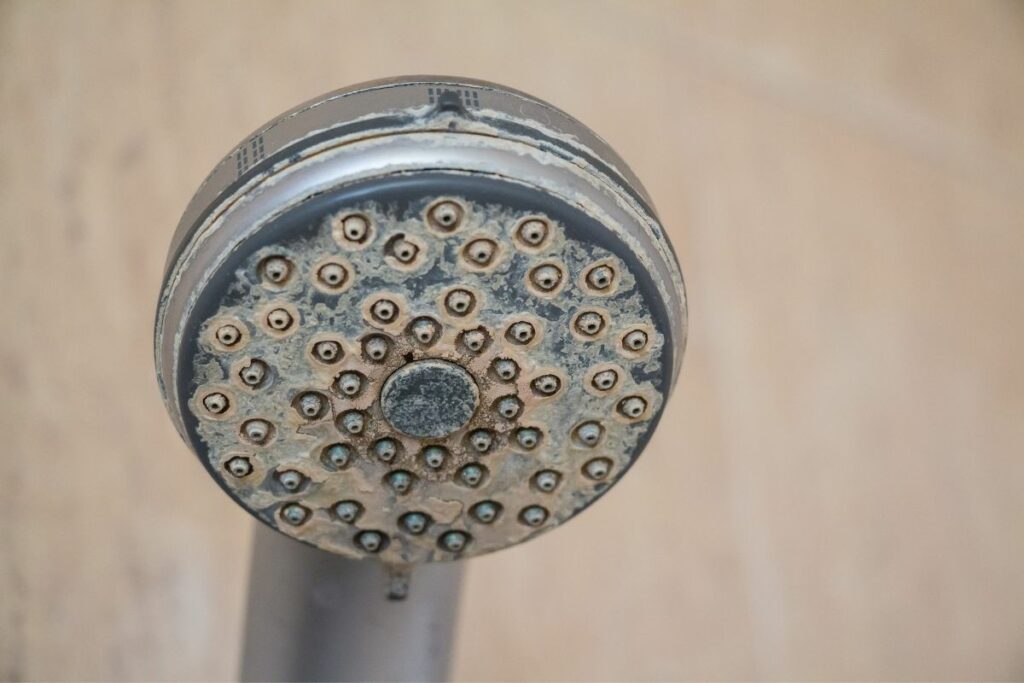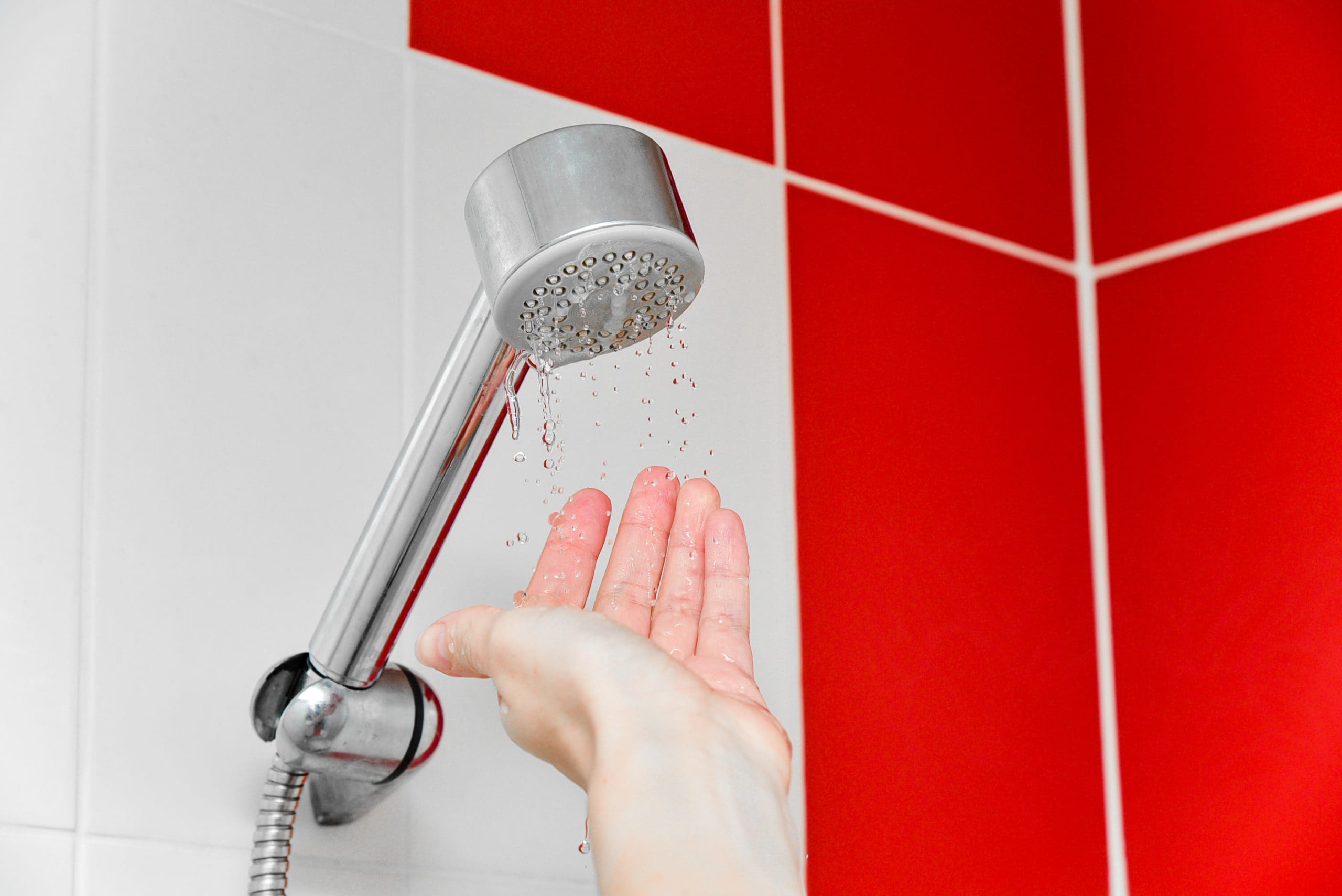Water that comes out of a shower needs to have enough pressure, otherwise, it’s very inconvenient to wet your body. The pressure for a shower is typically fixed based on whether you have a shower pump or not. But, this pressure can do down slowly over time, or all of a sudden be slow. Today, I will cover why the water pressure in a shower is low.
As a general rule, there is a blockage somewhere in the plumbing. The blockage is almost always at the top of the hot water cylinder. But, can also be anywhere along the plumbing. The shower head can also be blocked and needs to be cleared. Or, it can also be fitted with a low-pressure shower head.
There are a few different types of shower heads, and in some regions, the water supply is ‘hard’ water. Either of these is a factor that can decrease pressure to a shower. Below, I will provide a full list of the reasons why the water pressure in a shower is low so you can see how to make it stronger, or understand why it has low pressure.
Reasons That a Shower Has Low Water Pressure
There are a range of reasons why a shower has low water pressure. Here’s what they are, and why they cause low water pressure.
1. Blockage or leak somewhere in the plumbing
A small leak can affect the water pressure. This can occur at joins in the plumbing, or a crack can occur in one of the pipes. Most plumbing systems are very resilient so the chances that this does happen are quite low. The other issue is a blockage. A blockage is more common, especially if you have hard water.
As you may know, some regions have hard water. Whereas, others have ‘soft’ water. Others can have somewhere in between. You will know if your water supply has hard water because there will be a white residue on the tap fixtures. There can also be orange staining inside the toilet bowl.
There are solutions that will soften water. I explained these in detail and which is the best in this article about how to soften water in a shower. Hard water deposits can accumulate along pipes, which will slowly close them, and decrease water pressure. These issues are best evaluated by a plumber and typically require the entire plumbing system to be inspected.
2. Hard water deposits on the shower head

A shower head has small openings where the water comes out. Because of this fact they can get clogged with hard water deposits quicker. Hard ward deposits will accumulate in the openings of the shower head and cause decreased shower pressure (source). Luckily these are fairly easy to remove. It involves soaking them in a cleaner specially designed for hard water deposits such as CLR. It has also been found that vinegar works extremely well at removing hard water deposits.
3. Low pressure (low flow) shower head
There are two main types of shower heads, low-pressure, regular, and high-pressure shower heads. In some jurisdictions, shower heads must be low flow. This is because water is scarce in these regions, and low-flow shower heads save a lot of water.
I explained how much water is saved by when using a low-pressure shower head in this article about low pressure vs a high-pressure shower heads. An easy option, in that case, is to swap it out for a high pressure, or regular pressure shower head. Before doing so it’s important to test the water pressure coming out of your shower head. That way you will be able to tell if a new shower head will provide increased shower pressure.
How To Increase Water Pressure in a Shower
It’s possible to increase the water pressure to a shower. The water supply from the hot water cylinder is typically enough unless there’s an issue with it. Here’s what to do if you want to increase the water pressure for your shower.
In general, you should identify if there is an issue with the plumbing, or if it’s fitted with a low-pressure shower head. But, if there isn’t one you can install a shower pump. The one disadvantage of a shower pump is that your shower won’t work during a power outage.
Shower pumps are reasonably small, and are installed right next to a hot water cylinder. Here’s a really good video that shows a plumbing setup with a shower pump. As well as, a detailed explanation of how a shower pump works.
The reason a shower won’t work during a power outage if it has a shower pump is that the water has to first go through a shower pump before it enters the shower head. But, if there’s no power the shower pump won’t move at all and the water can’t go past the shower pump.
A shower pump is also connected in a way that makes it a big job to connect up the water supply lines to the shower directly. So, during a power cut, it’s generally easier to wait for the power to come back on.
Can a Hot Water Heater Cause Low Water Pressure
A regular shower is fed by a hot water cylinder, and so it has a big impact on how high or low the water pressure is once it reaches the shower head. But, here’s whether a hot water cylinder can cause low water pressure to the shower and throughout a house.
In general, a hot water heater won’t cause low water pressure unless there’s an issue with it. Hot water heaters can cause decreased water pressure if there is a blockage in the hot water heater. It’s somewhat common for the water outlet valve from a hot water heater to have a blockage.
This is especially the case if you live in a region with hard water. If you suspect the water heater is the reason you have lower water pressure, then it’s best to have a plumber inspect it. As well as, doing the steps explained at the top of this article.

Amos Christen graduated with a bachelor’s degree in Interior Design from Drexel University — Philadelphia, PA. Since 2003, Amos has worked with top interior design professionals in this area, including architects and interior/graphic/lighting designers. As a skilled interior designer, Amos Christen is highly versed in fine arts and crafts and uses that to supplement his main area of expertise. He often publishes articles related to home décor on several websites, including Sprucetoilets.com, Sprucebathroom.com, and Mybesuitedhome.com. He also contributes to leading interior design magazines.
